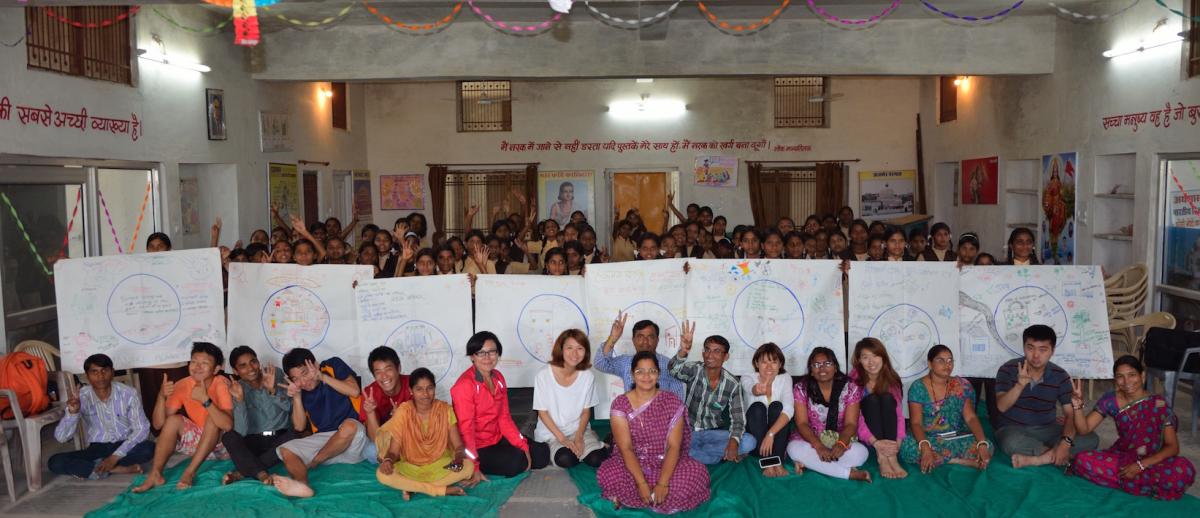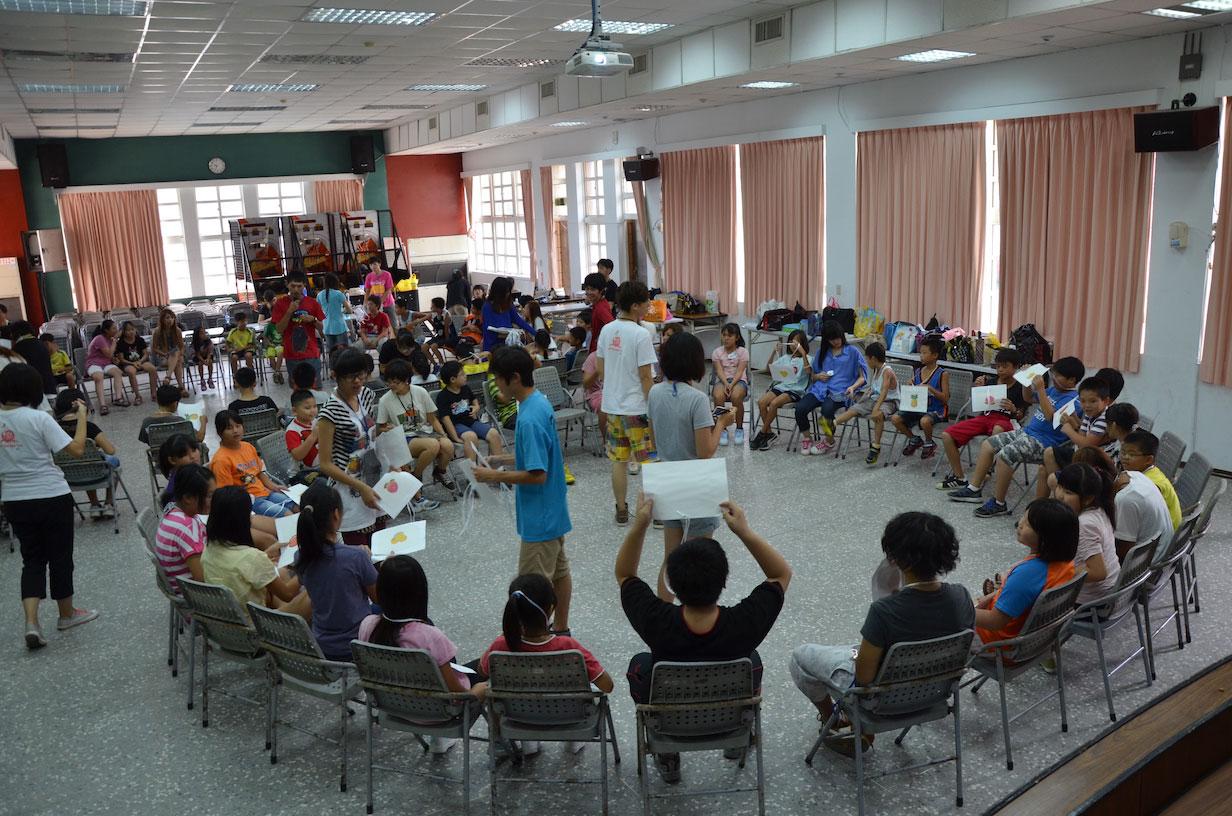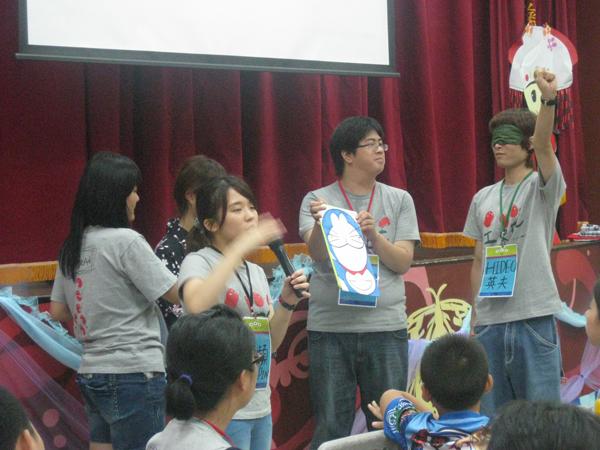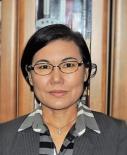A Service Learning Approach to Global Studies
archive


A Service Learning Approach to Global Studies
While global studies programs have proliferated rapidly around the world during the twenty-first century, departments and schools dedicated to the field reflect a wide variety of disciplinary leanings and intellectual orientations. A stable, commonly accepted definition of “global studies” remains elusive, even if it is a matter of some urgency among scholars. What should be the educational mission of global studies? What makes global studies unique, different from existing and seemingly related academic disciplines such as international studies? It seems to me that every academic involved in global studies grapples with these questions, especially given the relative youthfulness of the field and the scale of its objects of study. This essay offers some reflection on these issues through the prism of my experience with innovative teaching and learning strategies in the field.
Aside from teaching about the dynamics of globalization and its historical and contemporary developments, global studies also has the opportunity to nurture capable, globally-oriented young people who possess both practical skills and a grasp of diverse issues and challenges that are often complexly interconnected. Global studies therefore needs, I believe, to engage not just disciplinary but multidisciplinary, interdisciplinary and transdisciplinary ways of learning, as suggested by many scholars in our field.1 By transdisciplinary I mean “learning by doing,” a practical pedagogy best described as bridging the “four pillars” articulated by Basarab Nicolescu—learning to know, learning to do, learning to live together with, and learning to be.2 This practically oriented pedagogy is facilitated through service learning, with tools and insights drawn from life experience. The integration of campus teaching and training with service learning in overseas communities is particularly important, because the latter helps students to adopt a global perspective that is derived from activity in everyday life settings. In what follows I highlight our experience in developing a service-learning component for undergraduate global studies education at Tama University in Japan.
Developing a Service Learning Camp: Making Sense of the Global
At a conference in 2008 I had occasion to discuss with Dr. Ernie Ko from Yuda University in Taiwan our mutual concerns about challenges of higher education in our respective countries. We agreed that despite living in an era called globalization, our students’ knowledge or awareness of it is often limited to their local contexts. He told me about an experiential program then being tested by several Taiwanese universities, specifically designed for college students to involve them in so-called community service activities. Fortunately we were invited to join him and his students in Taiwan in summer 2009, where we dispatched five of our students for a short-term resident learning experience. At the conclusion of the program they expressed a desire to be doing tangible work, and after a series of discussions with them I visited Yuda University the following summer, and conducted supplementary research on service learning. We at Tama then began to think hard about implementing a program along the lines articulated by Bringle and Hatcher (2009: 38), creating “[a] course-based, credit-bearing educational experience in which students (a) participate in an organized service activity that meets identified community needs, and (b) reflect on the service activity in such a way as to gain further understanding of course content.”3 The overall aim is both to enhance their grasp of core concepts and to develop the personal values and sense of civic responsibility among students. With this definition as our touchstone, the School of Global Studies at Tama introduced a new component to our traditional study abroad programs―learning by serving―a course that emphasizes students’ direct engagement and participation in overseas community service. The program consists of three integrated parts: on-campus preparation and training of students, service learning in Taiwan** and debriefing sessions (“reflections”) upon returning from the experience, with two credit points awarded upon the completion of all three parts.

In parallel, continuous collaboration between Dr. Ko, myself, and the academic directors of Rui-bin Elementary School led in February 2012 to the establishment of a new summer camp to service elementary level students from the most disadvantaged schools in the country. Located in the rural area of Ruifang District in northern Taiwan, it is listed as an Education Priority Area of the Taiwanese Ministry of Education. Altogether 30 children from grades 3 to 6 participated in the inaugural camp, most of them possessing very basic or no English language skills. Our primary goal was to introduce school children to notions of mutual understanding, cross-cultural communication, and globalization in fun and participatory-interactive ways. The Tama University students who joined the first Rui-bin Camp had taken my human rights and other classes, which helped to shape the selection of topics that we covered in the camp program: “care and protection,” “child labor,” “educational rights,” “human dignity,” and so on. Daily class activities consisted of English language, Japanese language, Japanese culture, and human rights, using role-play, story-telling or other interactive methodologies for engaging the students with a selected issue.

Tama University students teach a game at Rui-bin Camp, 2014
For example, while introducing the Japanese Culture lesson my students worked with one of Studio Ghibli’s animated films titled “Spirited Away” (Sen-to Chihiro-no Kamikakushi)—the famous Oscar Award-winning animation. Through this film, they taught about spiritual traditions of the Japanese people. In the story-telling component they introduced “The Princess Kaguya” combined with the elements of role play to teach about the concept of respect for elders in Japanese culture. Demonstrated in a fun-and-play way, the story was particularly liked by the children and even encouraged them to write and share similar stories about their own grandparents, concluding that the “respect for elders” concept seems to transcend borders and is shared in many countries.
Not only did this activity provide a pretext for cross-cultural engagement but it also challenged the university student teachers to reflect on the distinctive qualities of Japanese and Taiwanese cultures, the histories of their interactions, and the role that representation plays in the constitution of transnational social relations and consciousness. Such activities—including the preparatory stage at home institutions and joint workshops led by Ernie and myself to prepare our university students to teach at the camp—were based on critical thinking, team-building, shared responsibility, and global/cross-cultural approaches.4
Although our history and experience in service learning is relatively brief, it is already discernible that service is a good way to learn practically what is being branded as global studies. Service learning promotes participatory education and helps make tangible the ideas and concepts animating global studies and active citizenship.
The success of the first camp and of the following one in August 2012 (which increased participating children to 100) has expanded our Taiwanese network of parents and legal guardians, school staff, volunteers and observing members of local communities who have been hospitable, supportive, and engaged participants in many of our activities. No doubt, this was a significant, highly reflexive educational and cross-cultural service learning experience for my students in particular, especially considering the two countries’ historical controversies of the past. As of 2016, the Rui-bin Camp celebrated completion of its 10th camp, offered now twice a year during winter and summer breaks. First conceived as an international collaborative project between Japanese and Taiwanese college students, professors and local volunteers, over the years the camp has attracted individual students and groups of students from universities in Mongolia, South Korea, and North America.
Although our history and experience in service learning is relatively brief, it is already discernible that service is a good way to learn practically what is being branded as global studies. Service learning promotes participatory education and helps make tangible the ideas and concepts animating global studies and active citizenship. The service learning approach is especially important for global studies because students not only develop an awareness of the theories, facts and discourse of the academic discipline, but also participate in “making” the global―be it through direct human or inter-community interactions, learning to understand other cultures’ values and priorities, and taking shared responsibility for decision-making and collective execution of cross-cultural projects like the Rui-bin Camp. This diversity of pedagogical approaches, including and reflected in our camp programs, create a transdisciplinary education in the sense described by Nicolescu as “lived experience” aimed at transformation of self or self-learning, something new and “beyond all disciplines.5
Conclusions
The educational profile of global studies could and should be raised through several approaches, not least so as to remain academically competitive with other fields of study. It should increase the practical applications of classroom knowledge and skills obtained, and include service learning components that have significant impact on young people, thereby moving towards an integrated curriculum. Scholars need to support and develop not just a research agenda but also the “field” of global studies in ways that will give all stakeholders in higher education a deeper and more nuanced conception of global studies as a discipline. The writing and publication of global studies textbooks, including handbooks, encyclopedias, and other general reference books, are definitely important but there should also be a space for serious discussions on the development of global service learning, a uniquely rich way of “growing” the experiential dimension of the field.
This brief sketch of what I see as the promise of service learning in the global studies curriculum permits me to think that the field will play an increasingly vital role in the cultivation of young generations of active and aware citizens. A curriculum anchored in service learning will furthermore strengthen cross-cultural communication and facilitate understanding of critically important world issues.
Acknowledgments: I am grateful to many people who supported us throughout the service learning programs ― Dr. Ernie Ko, Associate Professor at General Education Center, National Taiwan University of Arts, with whom we co-founded the Ruibin Camp, the students of Tama University (Japan), National Taiwan University of Arts, Yuda University and others, Mr. Stephen Huang and Ms. Chen, the Academic Directors, and other staff members of Rui-bin Elementary School in Taiwan, Ms. Hiroko Terayama, Mr. Daniel Lerner and others at Tama University, as well as numerous enthusiastic local volunteers who have not only assisted us but also eagerly participated in many activities we offered.
** Later a comparable program was established with the Adivasi aboriginal community in eastern India.
1 See, Campbell Patricia, J., Mackinnon, A. and Stevens Kristy, R. (2010). An Introduction to
(2016). "Beyond Interdisciplinarity: Developing a Global Transdisciplinary Framework."
Transcience, 7(2): 1-25; Nederveen Pieterse, J. (2013)."What is Global Studies?"
Globalizations, 10(4): 499-514; Nicolescu, B. (ed.) (2008). Transdisciplinarity:Theory
and Practice. Cresskill, US: Hampton Press; Steger, M.B. and Wahlrab, A. (2016). What
is Global Studies? Theory and Practice. New York: Routledge; Stoddard, E. and
Collins, J. (2016). Social and Cultural Foundations in Global Studies. Abingdon &
New York: Routledge, and others.
2 Nicolescu, Basarab (1999). “The Transdisciplinary Evolution of Learning.” Available at:
3 Bringle, R.G. and Hatcher, J.A. (2009). “Innovative practices in service learning and
directions in community engagement. San Francisco, CA.: Jossey-Bass, pp. 37-46.
4 Crabtree Robbin, D. (2008). “Theoretical Foundations for International Service-Learning.”
How we think: A restatement of the relation of reflective thinking to the educative
process. Boston, MA: D.C. Heath and Company; Garrison, D.R. (1992). “Critical
thinking and self-directed learning in adult education: An analysis of responsibility
and control issues.” Adult Education Quarterly, 42(3), 136-148; Kraft Nancy, P.
(2000). “The Role of Service-Learning in Critical Thinking.” Counterpoints, 110:
75-94; Mitchell Tania, D. (2008). “Traditional vs. Critical Service-Learning: Engaging
the Literature to Differentiate Two Models.” Michigan Journal of Community Service
Learning, 14(2): 50-65; Vygotsky Lev, S. (1994). “The development of thinking
and concept formation in adolescence.” In Van der Veer, R. and Valsiner, J. (eds).
The Vygotsky Reader. Oxford, UK: Blackwell Publishers, pp. 185-265; Vygotsky
Lev, S. (1994). “The problem of the environment.” In Van der Veer, R. and
Valsiner, J. (eds). The Vygotsky Reader. Oxford, UK: Blackwell Publishers,
pp. 338-354, and others.
5 Nicolescu, Basarab (2010). “Methodology of Transdisciplinarity―Levels of Reality, Logic
Science, 1(1): 19-38, p. 22.



